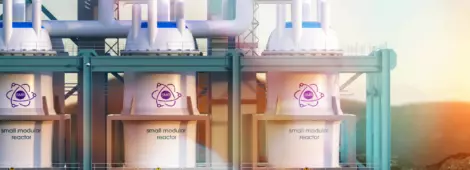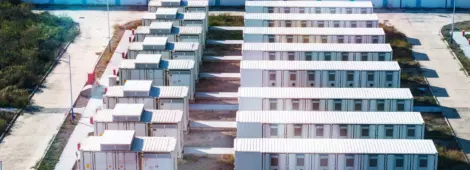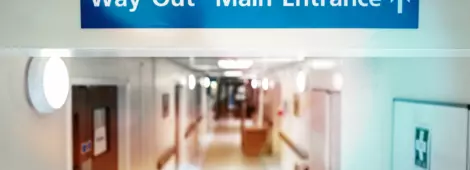
What NYC’s Proposed BESS Rules Could Mean for Your Project
by Jihan El Ouaragli and Jens Conzen
This post is part of our continuing blog series on battery safety. Check out our previous blog on CE marking vs. UL 9540.
As lithium-ion Battery Energy Storage Systems (BESS) continue to be deployed across urban environments, New York City (NYC) has introduced a formal set of rules that, once adopted, will directly impact how these systems are permitted, installed and operated. If you’re planning to deploy a BESS in the five boroughs, there’s now a formal framework to follow, and it’s more rigorous than ever.
This post breaks down the proposed rules from the NYC Department of Buildings (DOB), how they interact with fire code requirements and what steps project teams should take to prepare for compliance from design through decommissioning. As of this writing, the DOB rules are still in proposed form. The public comment period closed on January 23, 2025, and final adoption is expected later this year.
What Changed?
Until recently, BESS installations in NYC were reviewed on a case-by-case basis, often relying on limited interpretations of “alternative materials” in the construction codes. While guidance existed in the Fire Code and related bulletins, the absence of dedicated building code provisions created uncertainty around plan approvals and responsibilities.
That’s no longer the case. The NYC DOB has proposed two major rules:
- Rule 101-19, which sets the requirements for design, installation, commissioning, operation and decommissioning of BESS.
- Rule 3616-07, which adopts and modifies the 2020 Edition of NFPA 855 Standard for the Installation of Stationary Energy Storage Systems, to reflect NYC-specific conditions and risks.
What Does It Cover?
Under Rule 101-19, any indoor BESS installation that exceeds NFPA 855 thresholds (i.e. 600 kWh for lithium-ion BESS) must be listed to UL 9540 and undergo UL 9540A testing, unless an exemption applies. These listing and testing requirements are not optional – they’re a core component of the permitting process.
Additionally, the Fire Department of New York (FDNY) remains a central authority in the process. A product-specific Certificate of Approval (COA) is required, and in many cases, a site-specific Installation Approval as well. FDNY Rule 3 RCNY §608, titled "Outdoor Stationary Storage Battery Systems," is explicitly referenced for outdoor and rooftop BESS systems, which must meet additional setback and protection requirements.
For most large BESS installations, a site-specific review and third-party peer review are also mandated by the DOB’s Office of Technical Certification and Research. The peer reviewer must be a New York State-licensed, independent fire protection engineer.
Key Requirements You Should Know
Peer Review for Larger Projects
If your BESS exceeds defined thresholds (by energy capacity, type or location), an independent, DOB-approved fire protection engineer must review the design to confirm compliance with NFPA 855, UL 9540 listing, UL 9540A testing and site-specific fire safety and hazard mitigation objectives.
Decommissioning Plan
Before a BESS can be removed or replaced, DOB must receive a formal decommissioning notice, along with required permits and documentation. This plan must include steps to safely isolate, dismantle and remove all BESS components. This applies to both new and existing systems.
Commissioning and Sign-Off
Commissioning planning is no longer just a best practice – it’s a legal requirement. A formal commissioning plan must be submitted to DOB and FDNY before a BESS can be energized. If peer review was required, final certification must align with the approved design.
New Installations and Existing Systems
All new BESS installations must be registered before operation. Existing BESS installations that fall within the scope of Rule 101-19 must also be registered within three years of the rule's effective date.
Additional Provisions
- Indoor BESS must be installed in fully sprinklered buildings, unless otherwise exempted.
- BESS installations below the Design Flood Elevation are not permitted unless flood mitigation measures are implemented.
- Emergency Management Plans must include responder notification protocols, remote monitoring capabilities and contact information for dispatchable staff with valid FDNY Certificates of Fitness.
- Cybersecurity controls are required for BESS installations that support legally required power systems via a networked interface. These must meet UL 2900-1 or IEC 62443.
- Explosion prevention and/or deflagration venting is required per NFPA 68 or NFPA 69.
What This Means for Developers, Owners and Installers?
The key takeaway? NYC now has one of the most comprehensive municipal frameworks for BESS safety in the U.S. These rules don’t just mirror national codes and standards; they go further, especially for indoor systems and installations in residential or flood-prone areas.
If you’re designing, installing or reviewing a BESS in NYC, make sure your design documents account for:
- UL 9540 listing and UL 9540A testing
- Coordination with FDNY for COAs and site-specific review
- Site access planning
- Emergency management planning
- Independent peer-reviewed fire safety and hazard mitigation plans
Need help preparing for compliance with the upcoming NYC BESS rules?
Let’s talk. From navigating code compliance to preparing hazard mitigation strategies, our team of battery safety experts at Jensen Hughes is here to support your NYC projects safely and proactively.

Subscribe to Our Lithium-Ion Insights Series

Dr. Jihan El Ouaragli is a staff engineer at Jensen Hughes, specializing in battery fire protection, including battery energy storage systems (BESS), battery storage and testing, micromobility, and electric vehicles (EVs). With a Ph.D. in…

Jens is a Vice President of business development in the Midwest, and a Subject Matter Expert in Industrial and Process Safety. He has hands-on experience in various disciplines, such as engineering design, international and national…












